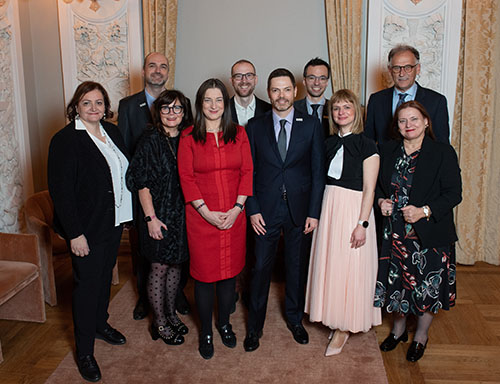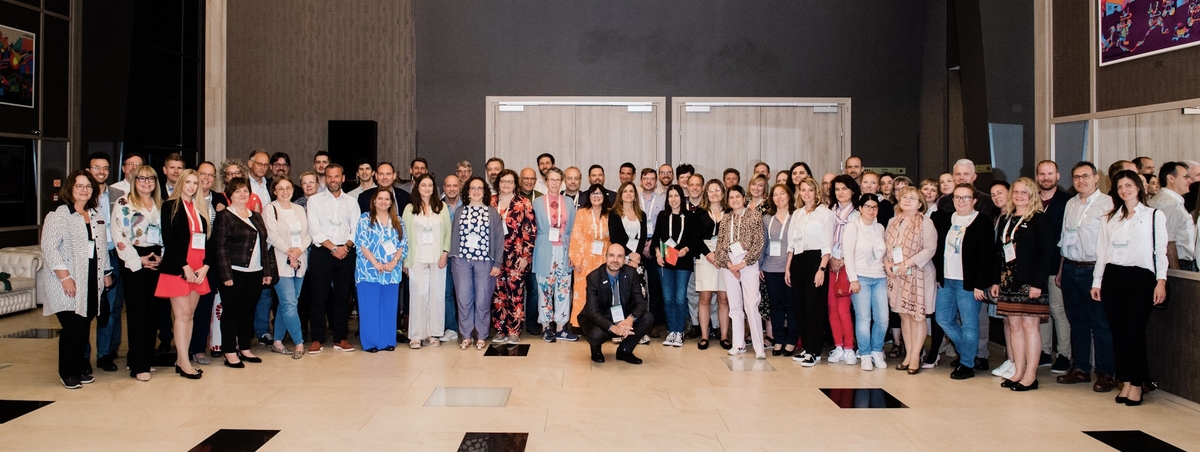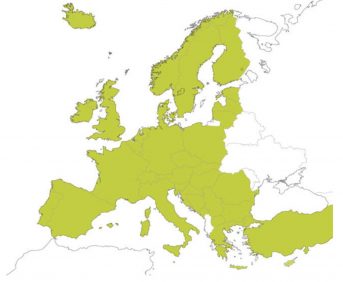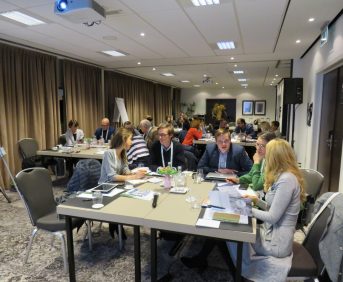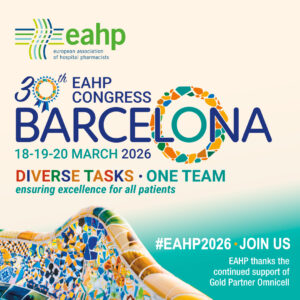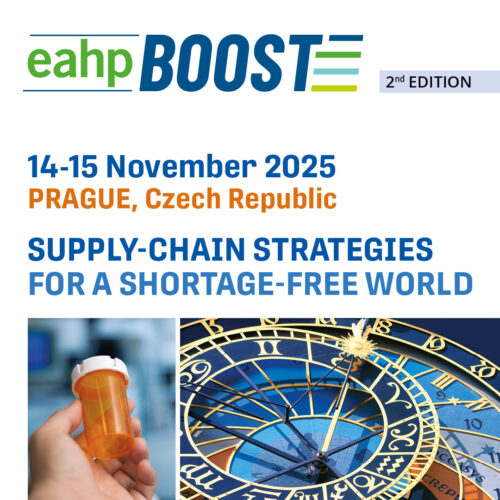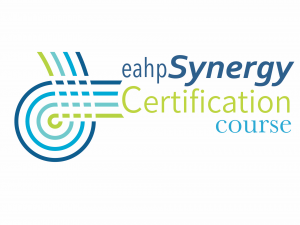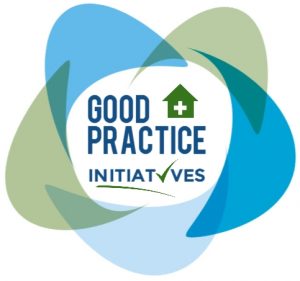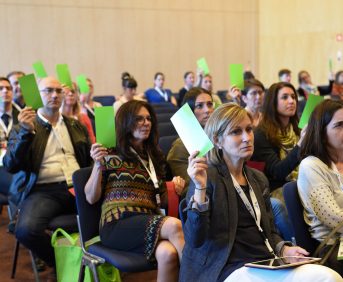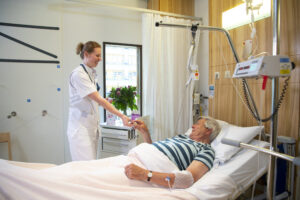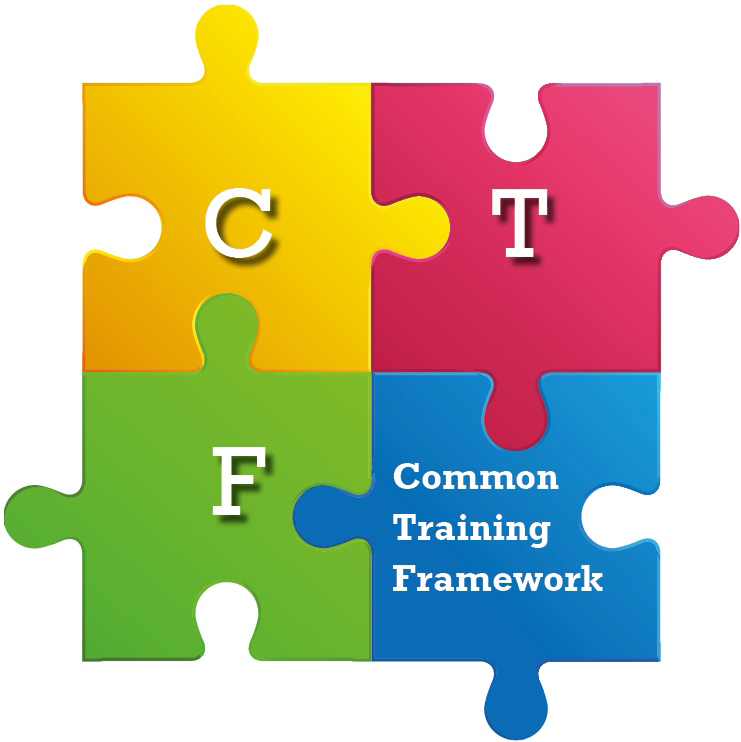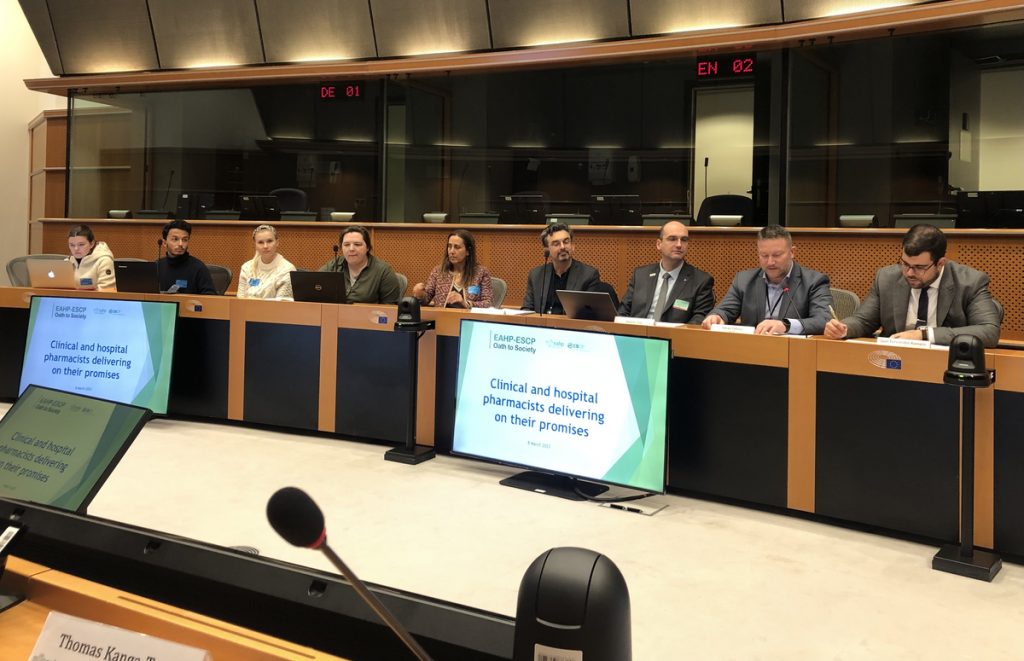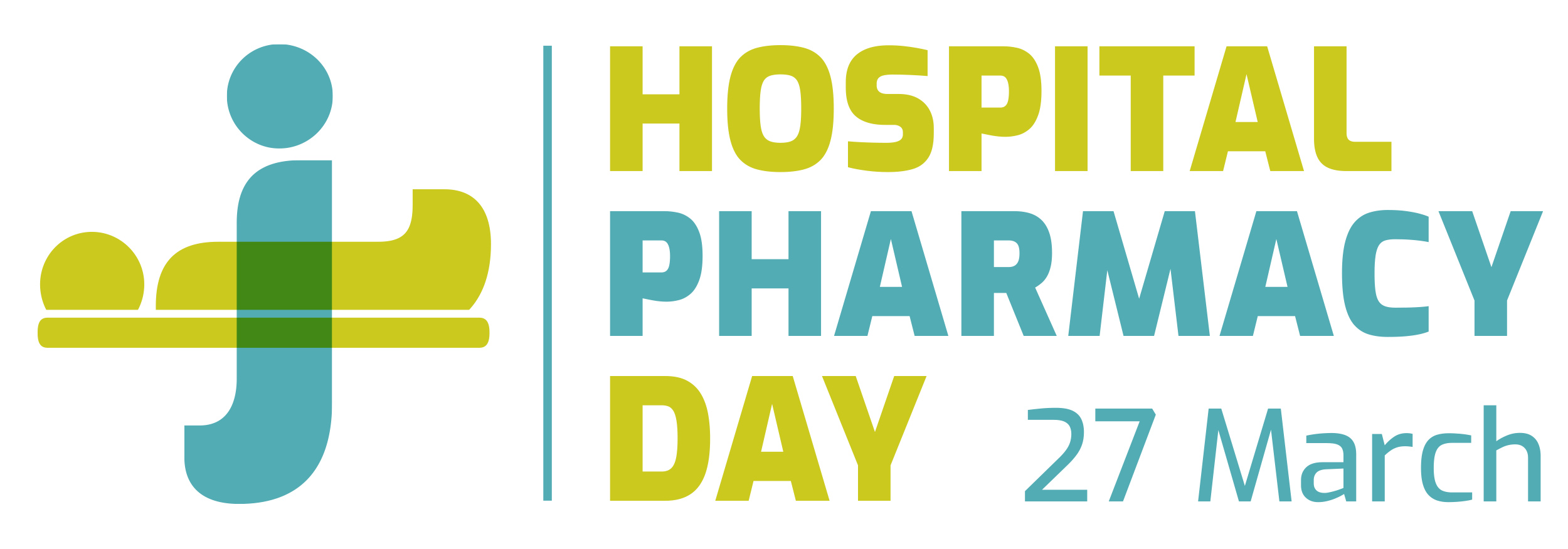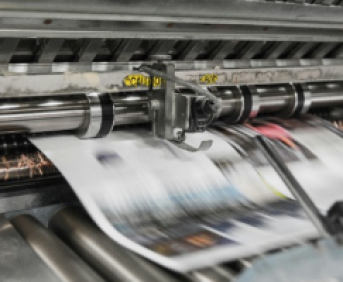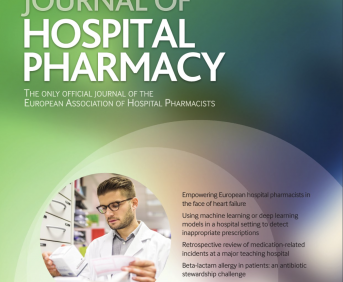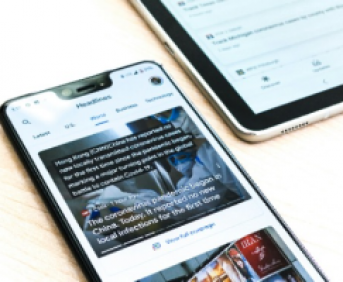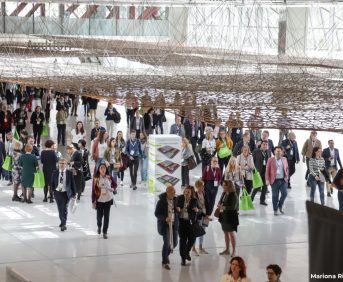DESIGN AND IMPLEMENTATION OF A PROGRAM FOR THE ADMINISTRATION AND FOLLOW-UP OF PHARMACOTHERAPEUTIC DRUGS IN PATIENTS WITH LONG-ACTING ANTI-HIV DRUGS
Pdf

European Statement
Clinical Pharmacy Services
Author(s)
MARTÍNEZ LLIBERATO, A; COMPANY ALBIR, MJ; VICENTE ESCRIG, E; VALLEJO GARCÍA, R; RUBIO ORTOLÁ, L; GARCÍA MONTAÑÉS, S; BELLÉS MEDALL, MD; FERRANDO PIQUERES, R
Why was it done?
It was carried out to ensure the best monitoring, traceability and conservation of long-acting antiretroviral drugs, as well as to improve adherence and patient quality of life and reduce stigma in HIV patients.
What was done?
A program was developed for the administration and pharmacotherapeutic monitoring of patients who are candidates for long-acting antiretroviral treatment (LA-ART), coordinated with the infectious diseases unit (IDU) and the Hospital Pharmacy Outpatient Unit (HPOU).
How was it done?
After the inclusion of the drugs in the pharmacotherapeutic guide, the following program was designed:
1. Identification and communication to the HPOU by the IDU of patients who are candidates for LA-ART and electronic prescription.
2. Initial visit (week 0):
• Review and validation of the treatment by the pharmacist: indication, dosage regimen, interactions, contraindications.
• Planning of the annual administration calendar, providing two dates within the window period allowed by these drugs. Patients are scheduled for pharmaceutical care (PC) and administration on working Thursdays, in the HPOU Health Education Consultation agenda, which has a nurse.
• Information to the patient by the pharmacist, orally and in writing, about administration and adverse reactions. In addition, the annual appointment schedule is provided.
• Appointment of the patient for the first successive visit, if the patient accepts the start.
3. SMS sent the day before, to remind the patient of the follow-up visit. If the patient cannot attend the scheduled appointment, he/she will contact the HPOU to schedule an alternative date according to the calendar.
4. Successive visits (week 4 and every 8 weeks):
• PC
• Intramuscular administration by a nurse.
In all visits, the information is recorded in the patient’s computerized medical history.
What has been achieved?
Of 18 candidate patients in 18 months, 15 accepted ART after the initial visit. 89 PC and administration consultations have been carried out. Adherence was 100%, all reported local discomfort at the injection site between 1 and 7 days after administration and only 1 patient reported pyrexia.
What next?
A program applicable to all HPOU that have nursing and a Health Education consultation to implement adherence in these patients.
APPLICATION OF ARTIFICIAL INTELLIGENCE FOR THE COMPARISON OF NEW DRUGS AND MEDICAL DEVICES
Pdf

European Statement
Education and Research
Author(s)
Damuzzo V (1), Rivano M (2), Cancanelli L (3), Brunoro R (4), Gasperoni L (5), Ossato A (6), Colicchio A (7), Del Bono L (8), Di Spazio L (9), Celentano Fasano CN (10), Chiumente M (11), Mengato D (12), Messori A (13)
1) UOC Farmacia, AULSS2, P.O. di Vittorio Veneto
2) Hospital Pharmacy, Azienda Ospedaliero Universitaria, Cagliari
3) UOC Farmacia, AULSS2 Marca Trevigiana, P.O. di Castelfranco
4) School of Specialisation in Hospital Pharmacy, University of Milan, Milan
5) Oncological Pharmacy, IRCCS Istituto Romagnolo per lo Studio dei Tumori (IRST) ‘Dino Amadori, Meldola;
6) School of Specialisation in Hospital Pharmacy, University of Padua, Padua
7) Hospital Pharmacy, Azienda Unica Sanitaria Locale di Bologna (AUSL), Bologna
8) Azienda Ospedaliera Universitaria Pisana, Pisa
9) Hospital Pharmacy, Santa Chiara Hospital, Trento, Azienda Provinciale per i Servizi Sanitari (APSS);
10) Hospital Pharmacy, Azienda Ulss 3 Serenissima, Mirano,
11) Italian Society of Clinical Pharmacy and Therapeutics (SIFaCT), Milan
12) Hospial Pharmacy Unit – Azienda Ospedale-Università Padova
13) HTA Unit, Tuscany Region, Florence
Why was it done?
The clinical selection of available treatments and medical devices (MDs) is often hindered by the absence of direct efficacy comparisons between emerging therapies. This AI-tool aimed to address this challenge by employing advanced analytical techniques to facilitate informed decision-making in clinical settings.
What was done?
In 2016, the Italian Society for Clinical Pharmacy and Therapeutics (SIFaCT) launched the AVVICINARE project with the goal of training young hospital pharmacists to develop innovation in research based on non-original, already published data. We recently approached the field of indirect comparisons, applying the artificial intelligence (AI) technique ‘IPDfromKM’ to extract individual patient data (IPD) from Kaplan-Meier (KM) survival curves, enabling the indirect comparison of emerging pharmacological treatments and MDs
How was it done?
Drugs and technologies with similar therapeutic roles and efficacy assessed by time-dependent endpoints (Overall Survival, Progression-Free Survival) were identified. KM curves from relevant clinical trials were digitized, and the IPDfromKM application was used to reconstruct the IPD. Data from different studies on the same treatments were pooled to enhance sample size, and standard statistical techniques (Cox regression, inter-treatment comparison) were employed, considering long-surviving patients (restricted mean survival time [RMST]). A heterogeneity analysis ensured comparability of patient cohorts.
What has been achieved?
Drugs and technologies with similar therapeutic roles and efficacy assessed by time-dependent endpoints (Overall Survival, Progression-Free Survival) were identified. KM curves from relevant clinical trials were digitized, and the IPDfromKM application was used to reconstruct the IPD. Data from different studies on the same treatments were pooled to enhance sample size, and standard statistical techniques (Cox regression, inter-treatment comparison) were employed, considering long-surviving patients (restricted mean survival time [RMST]). A heterogeneity analysis ensured comparability of patient cohorts.
What next?
Given the increasing value of indirect comparisons in both clinical and pharmacoeconomic contexts, ongoing efforts will focus on refining the analytical techniques and expanding training programs for hospital pharmacists. Future work will also explore additional therapeutic areas to broaden the impact of evidence-based medicine and enhance the role of hospital pharmacists in clinical decision-making.
AN INTERPROFESSIONAL TRAINING WARD AND ITS BENEFIT FOR PHARMACY STUDENTS
Pdf

European Statement
Education and Research
Author(s)
Dückelmann Christina C., Landwehr Frauke
Why was it done?
According to the World Health Organization, interprofessional education and collaborative practice are leading to improved health outcomes. Interprofessional education occurs when students from two or more professions learn about, from and with each other to enable effective collaboration and improve health outcomes.
What was done?
A cohort of two medical and two pharmacy students as well as four nursing trainees were selected to take over ward mangement and patient care for up to four real patients in a real hospital setting during a five weeks´ period. They were supervised by experienced professionals who “sit on their hands and look out of the window” only interfering when patients are endangered or situations are getting risky for patients.
How was it done?
To find out what the benefit was for pharmacy students, all six of them that where included in this year´s interprofessional wards on a cardiology and a neurology department, were interviewed using guided, problem-centred interviews. Their experiences were qualitatively explored and evaluated with regard to structure, supervsion, feedback and interprofessionality of this training.
What has been achieved?
Pharmacy students reported that the current structure, supervision and feedback enabled them to learn clinical pharmacy in a very profound way. On the other hand, it made other health care professionals aware of how they could benefit from clinical pharmacists and what the role of clinical pharmacists really is. The experience of being responsible for patients together with medical students and nursing trainees in this interprofessional setting was extremely helpful for their learning success and made them realize which influence on patients´ outcome working together in a team like that could have.
What next?
The Interprofessional Training Ward will be continued and rolled out on further departments of the hospital. In 2025, the surgery department will be part of the project. There, clinical pharmacists are badly needed. This qualitative research revealed the potential for further optimization of this programme in order to meet the learning objectives and expectations of the students even better. This will be aimed for in the next interprofessional training wards.
«At the pharmacy, it is not just the cross that is green » Design and distribution of an awareness video on sustainable development related to the hospital pharmacy sector
Pdf

European Statement
Education and Research
Author(s)
Pascaline Hubot, Anais Lumen , Marion Lefebvre, Audrey Christiaens , Claudia Tavernier , Olivia Dalleur
Why was it done?
With the healthcare sector’s climate footprint accounting for 4.4% (2019) of global greenhouse gas emissions, sustainable development in healthcare is one of today’s challenges. It is important and urgent to highlight the simple actions that can be implemented to reduce these emissions and to promote them. The objectives were: (1) To identify eco-friendly practices related to the pharmacist’s work. (2) To design an animated video and (3) To raise awareness among pharmacy staff about sustainable development.
What was done?
Students in their final year of a complementary master’s degree in hospital pharmacy at the Université Catholique de Louvain (Belgium) decided to take on the challenge of producing an animated video on eco-actions specific to the profession of hospital pharmacist.
How was it done?
Firstly, a literature review (PubMed, Google Scholar) on sustainable development in healthcare followed by a focus group was carried out to identify and select ten eco-actions most relevant to the hospital pharmacist’s job. We provide at least one example for each sector of the pharmacy. Secondly, a brainstorming session was held to select the most appropriate communication tool.
What has been achieved?
An 8-minute animated video was produced using Powtoon software (January 2023 version). This video is available free of charge on Youtube (https://www.youtube.com/watch?v=5eKQVcVlP00). A poster was created for display in all hospital pharmacies in French-speaking Belgium to inform as many staff members as possible about best practices in sustainable development. A QR code was added to the poster to enable a direct access to the video. The project was presented by webinar for French-speaking Belgian hospital pharmacists in April 2023. This video is now included in the programme of a complementary Master’s degree in hospital pharmacy at the Université Catholique de Louvain.
What next?
In the face of climate challenges, raising awareness of sustainable development issues remains the watchword This educational video is a first step in initiating actions to make pharmacy more sustainable. It will be presented at the next annual meeting of French-speaking Belgian hospital pharmacists in 2024 and we hope that pharmacists will implement these concrete eco-friendly practices within their institutions.
Creation of a pedagogical tool to optimise the validation of chemotherapies related to rhabdomyosarcoma
Pdf

European Statement
Education and Research
Author(s)
Franco Perna, Maria Elisabetta Uda, Maxime Annereau, Hail Aboudagga , André Rieutord, My Lan Vo
Why was it done?
The process of pharmaceutical validation of chemotherapy involves several steps, and the hospital pharmacist must rely on multiple therapy protocols. In addition, pharmacists who have just finished university do not have the appropriate training for pharmaceutical validation. Thus, we decided to develop a tool to support the validation of chemotherapy, in which pharmacists can learn therapy protocols.
What was done?
The hospital pharmacy has developed a pedagogical tool to support pharmaceutical validation in the context of rhabdomyosarcoma (RMS).
How was it done?
We initially carried out a systematic review, following the PRISMA 2020 Statement, to find if there were any educational methods or tools exist to facilitate pharmaceutical validation in paediatric oncology.
Then, we contacted several pharmacists, currently employed in French hospitals and abroad, to understand how they train new pharmacists and resident students about chemotherapies validation. After this first stage, we focused our research on the content of our future educational tool. We created an easy-to-fill questionnaire to obtain information and meet from clinical pharmacists inside our department to understand which information was needed for the tool and what could be the most suitable format for them.
What has been achieved?
Regarding the systematic review, only two studies were identified, in which tools for pharmacists were developed, but none of these concerned the pharmaceutical validation of paediatric chemotherapy. The hospital centres contacted did not develop pedagogical tools, but some of them support the training with standard operating procedures (SOPs).
The questionnaire, in which 15 pharmacists (27% students) were interviewed, revealed that most preferred a tool in pdf (48%) and paper format (22%), containing information on pathophysiology (48%) and epidemiology (22%) of rhabdomyosarcoma, on chemotherapy protocols (32%) and dosage regimens (19%). For this reason, a pedagogical tool has been developed in pdf format and in the form of a paper booklet with the required information.
What next?
This tool could be the first presented regarding the validation of paediatric chemotherapy.
The future prospect would be to develop other tools to support pharmaceutical validation so that we can invest more and more and provide more and more quality training to new hospital pharmacists.
Development of a podcast for student learning and motivation (the MUG-Hub)
Pdf

European Statement
Education and Research
Author(s)
Sian Williams, Connor Thompson
Why was it done?
Podcasts are generally accepted as a valuable tool for enhancing student engagement with course material and motivating students in educational settings. They also offer an exciting opportunity for allowing students to make connections between what is taught on the course and it how applies in the ‘real-world’ through discussion with practicing professionals.
What was done?
The Medicines Use Group (MUG) at the University of Brighton have co-created a series of podcasts (called ‘The MUG-Hub’) to increase student pharmacists’ access to and understanding of current issues related to medicines use and to provide information, inspiration and motivation around future careers in pharmacy.
How was it done?
A small group of teaching staff (including the authors) were matched with a student partner through a digital learning initiative run by the university. Through the process of co-creation a list of topic ideas and format considerations was collated and the podcasts developed and disseminated to the wider student body (podcast titles include ‘My career in pharmacy: reflections of a specialist liver pharmacist’, ‘Working in general practice as a pharmacist’ and ‘Designing an MPharm course fit for future pharmacists’).
What has been achieved?
A series of 30-60 minute podcasts has been created and is disseminated to student pharmacists on a monthly basis through the digital learning environment. The introduction of podcasts to the course enhances students’ development in terms of self-led learning, communication and collaboration and essential digital skills.
What next?
We plan to take the work forward by engaging more students in the creation of future podcasts and compiling topic lists for future episodes and surveying student engagement with the podcast.
National competition for pharmacy students in Bulgaria “become a hospital pharmacist”
European Statement
Education and Research
Why was it done?
There are five accredited faculties of pharmacy in Bulgaria – two in Sofia, one in Plovdiv, one in Varna and one in Pleven. The training is only full-time with a duration of 5 years, with 26 compulsory courses in which hospital pharmacy is covered to a very small extent. Only one of the faculties in Sofia offers the opportunity to specialise in clinical pharmacy during the studies, which include 30 hours of lectures and 45 hours of exercises in hospital pharmacy. The disinterest of graduating students in pursuing a career in hospital pharmacy prompted the BAHP Board to organise this competition to bring attention to hospital pharmacy in a non-traditional way.
What was done?
The Bulgarian Association of Hospital Pharmacists /BAHP/ organises during its annual conference a National Competition for Pharmacy Students “Become a Hospital Pharmacist” – for the first time in 2021. Since then, it has been held annually with increasing interest from students.
How was it done?
The areas in which the students will compete – Pharmacology and Pharmacotherapy, Regulation of Hospital Pharmacy and Practical part, as well as the regulations of the competition were determined. An invitation with information was sent to all faculties. For the year 2021, teams from three faculties participated, for 2022 four faculties, and for 2023 all faculties will participate. Each team has a scientific supervisor and the costs of participation are covered by the university.
What has been achieved?
1.Strengthening the links between the BAHP and the faculties
2. Repeatedly increased student interest in hospital pharmacy.
3. Increased number of students wanting to do their pre-graduate internship in hospital pharmacy
What next?
Continuation of the annual competition and deepening the collaboration with the faculties. It is also possible to organise such an event between different countries.
Environmental criteria in medicine procurement
Pdf

European Statement
Selection, Procurement and Distribution
Author(s)
Outi Lapatto-Reiniluoto, Suvi Sivula, Elina Ahomäki
Why was it done?
Price has been the most prominent criteria in procurement quality being the second. Environmental aspects haven’t been assessed earlier. Differences between the pharmaceuticals’ environmental burden can be considerable and by choosing wisely we would be more sustainable.
What was done?
Environmental criteria have not been used in Finland in hospital procurements earlier. We created the criteria which would be acceptable to all parties (hospitals, suppliers), would be reliably assessed, and easily copied to other hospitals.
How was it done?
Our tender had six questions for everyone and two more questions for antibiotics or hormones. The common questions were answered by yes / no / we do not know. Points given were 0, 1, 2. An example of the common question is: Does the company have a plan how to reduce CO2 emissions caused by itself?
Questions for antibiotics and estrogen hormones were: Company has told in which country and in which plant the API is produced and the formulation happens.
What has been achieved?
132 providers answered so far. Quality of answers varied considerably, from 0 to 12 points, mean 7 points. Questions for antibiotics created the most discrepancies: 41 providers; 15 were not able to answer these questions acceptably. The answers showed that the questions were not too difficult, these questions could be answered, and the answers can be analysed.
What next?
The criteria were very simple and assessing the answers was not difficult. Only one question was widely misunderstood. Questions were universal and can be used in other hospitals, too, which is the wish from the industry (same questions everywhere). Wide range of results showed differences between the companies. During this round we did not give any credit for the best products but in the future more responsible products should be rewarded. Antimicrobial resistance e.g., is a global problem but if the company does not know where its products are manufactured how can they look after wastewater treatment of their products.
Entrustable Professional Activity in Medical Reconciliation as an assessment tool to measure competency of pharmacy pre-registration students
European Statement
Education and Research
Author(s)
Ula Bozic, Matthias Witti , Jan Zottmann , Martin Rudolf Fischer, Yvonne Marina Pudritz
Why was it done?
Among other functions of EPAs (description of activities as a guide for students, function as a curriculum guideline), they can be used as assessment tools – in our case, to identify gaps in students’ knowledge/skills and, depending on the results, to aid guiding curricula development of our educational program to ensure high quality training service.
What was done?
Entrustable professional activities (EPAs) are observable clinical activities consisting of knowledge, skills and attitudes that can be entrusted to learners over time. In German pharmacy education, EPAs have not yet been developed or used. For this project, we developed a Medical Reconciliation EPA for pharmacy pre-registration students taking part in a rotational programme at LMU University Hospital Munich. Four steps were required for the development: (1) Development of content for EPA description and the associated checklist by a working group of clinical pharmacists through literature review and work analysis. (2) Validation of the developed EPA and checklist by an independent expert group of clinical pharmacists from across Germany. (3) Application of the EPA and checklist in an assessment situation to check for inter-rater reliability. (4) Roll-out of EPA and checklist for assessment of pharmacy pre-reg students at LMU.
How was it done?
Since EPAs are a new concept in (German) pharmacy education, their concept as well as their assessment process with entrustment decisions required explanation in detail to facilitators and students alike in several workshops, which we have successfully organised and executed.
What has been achieved?
Through the implementation of this EPA, we can assess students’ competencies in performing medication reconciliation, identify the weaknesses of our training programme and adapt the content to improve students` skills in their performance.
What next?
Further EPAs with a focus on hospital discharge and medication analysis are being developed. With EPAs, it is possible to translate theoretical competencies into observable activities that can be assessed in a clinical setting. As pharmacists in Germany are increasingly involved in clinical practice, there is a need to assess their skills in performing day-to-day clinical tasks. EPAs are an excellent tool for this purpose.
DELIVERY OF PHARMACY EDUCATION DURING THE COVID19 PANDEMIC, ONE HOSPITAL’S EXPERIENCE
European Statement
Education and Research
Author(s)
Dearbhla Murphy, Patricia Ging, Jennifer Brown
Why was it done?
The Pharmacy Department at our institution are responsible for the delivery of a number of in-house and University level education sessions to pharmacy, nursing and medical students. In 2020, sessions included: a prescribing workshop for final year undergraduate medical students; nursing induction lectures on parenteral drug therapy; leadership workshops, lectures and site visits for pharmacy students; clinical pharmacist education sessions; and weekly journal club for Pharmacy Department staff. During the COVID19 pandemic, Pharmacy delivered education sessions were challenged with addressing the hospital-wide recommendation that face to face meetings be avoided while maintaining essential training for healthcare staff.
What was done?
Pharmacist led education sessions, both at an in-house and University level, were adapted to virtual platforms during the COVID19 pandemic.
How was it done?
• A pharmacy team of key stakeholders were formed for each education session.
• Educational material was reviewed and revised for suitability for a virtual platform.
• Interactive learning components were explored on the various delivery platforms e.g. Brightspace®, Zoom® and Microsoft Teams®.
• For the pharmacy student virtual site visit, Pharmacy staff prepared short videos about their roles.
• Interactive tools from within and outside the delivery platforms were used e.g. breakout rooms, MCQs, ‘chat’ tools, live quizzes and Menti®.
• Feedback on individual education sessions was sought via email or use of online surveys
What has been achieved?
• All education sessions were successfully delivered virtually.
• Positive feedback was received for all sessions.
• Unexpected benefits gained from virtual delivery, include the availability of recordings which can be used to repeat the session for future students.
• Limitations learned include difficulty retrieving student feedback online.
What next?
The Pharmacy Department successfully adapted the delivery of education sessions, at University and hospital levels, during the COVID19 pandemic to ensure continued delivery of high level education, learning and engagement. The initiatives and learnings from this GPI are transferable to other hospital pharmacy departments.
